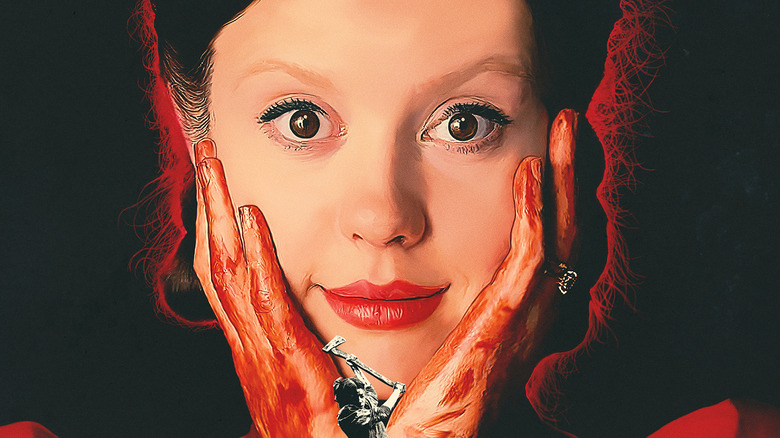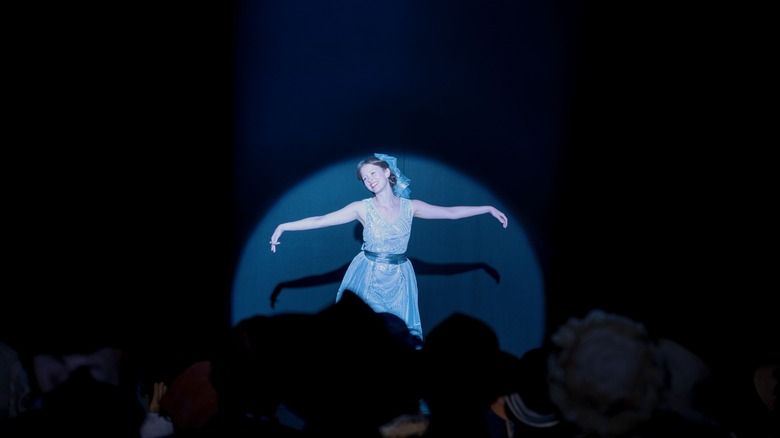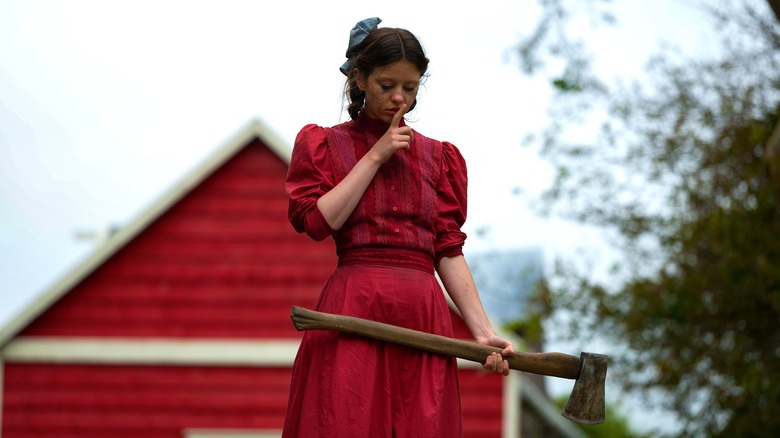Pearl Review: An X-Traordinary Prequel
- Mia Goth's performance is incredible
- It looks amazing
- It's darkly funny
- The horror is wildly different from the previous film, but just as effective
- It doesn't move at the same tight clip as "X"
Though he's primarily known as a horror filmmaker, Ti West has always displayed a certain chameleonic tendency even within his chosen genre. Whether he's working with '80s throwbacks ("House of the Devil") or found footage ("The Sacrament"), West has always found a way to immerse himself and his cast and crew in the formalism of whatever he's working on, which means that each film is distinct from the one that came before, even when they're connected.
Which brings us to "Pearl," West's latest film and a prequel to his previous 2022 horror hit, "X." Announced in a surprise reveal following the SXSW premiere of "X," "Pearl" reunites West with the first film's star, Mia Goth, for a decades-earlier origin story that's both visually and tonally very different from its predecessor. And yet, perhaps the most striking thing about "Pearl" is that it manages to be so different while never losing touch with the world that inspired it. Vibrant, brutal, and driven by Goth's fierce lead performance, it's a haunting, blackly comic melodrama, a Disney Princess movie for axe murderers, that's just as unforgettable as the sleazy slasher vibes of "X."
A star is born
It's 1918, and Pearl (Goth, no longer under the heavy prosthetics she used to play the character as an old woman in "X") dreams of becoming a star. As World War I rages in Europe, taking her husband away from her, and a flu pandemic rages at home, she does chores on the family farm while performing dances for the animals in the barn, taking every opportunity to go into town and see a movie. More than anything, Pearl wants to go from watching movies to starring in them, but the world of the farm feels far away from the silver screen, with her ailing father (Matthew Sunderland) and her domineering mother (Tandi Wright) holding her back.
When she sees what feels like her big break looming in the form of a local audition for dancers, Pearl hopes to finally make a clean break from the farm and the dull lives of her parents. But the journey from farmgirl to silver screen star isn't easy, especially as Pearl realizes something is lurking in her, a darkness that she can't explain but which threatens to consume everything around her.
Right away, "X" fans will notice various hallmarks of that film's world, from the farmhouse at the center of the story to the way West chooses to frame certain shots, but "Pearl" does not coast by on references like so many prequels before it. We recognize that this is the same universe, the same plot of land, the same house where things went horribly wrong for a group of teenagers, but it's both a different time and a different Pearl. West and Goth (who co-wrote the screenplay with the director) embrace the 1918-ness of it all just as they embraced the late 1970s aesthetics of "X." That means silent movies flicker around Pearl's world, the Spanish flu looms as a constant threat, and the distant brutality of war affects everyone's daily life. It also means that West and Goth get to play with an entirely different tone and an entirely different kind of horror.
The origin of X
Almost immediately, with its sweeping score and bright, dramatic colors, "Pearl" sweeps you into a world that feels more like the Golden Age of Hollywood than a modern slasher, or even a throwback slasher with a modern edge. West and Goth are intimately concerned with Pearl's inherent darkness, her sometimes ruthless nature, and the urges that she constantly resists right up until she doesn't. The result is a film that's more of an emotional horror than a physical one (though the physical horror does come and doesn't hold back). Goth's fearless central performance pushes the emotional resonance of the film into overdrive, even as West's visual style calls to mind everything from "The Wizard of Oz" to Disney films to old melodramas about farm girls with big dreams. Goth never resists this stylized view of Pearl's world, and yet her performance is remarkably subtle given some of the more over-the-top elements of the storytelling. She's completely invested in the inner reality of the character, in the rich fantasy world that Pearl retreats into when the real world is too much for her, and she explores it with big, expressive eyes, a wide smile, and savagery that flips on and off like a light switch. It's a remarkable performance, and West knows exactly how to complement it with his direction.
In some ways, much like "X," "Pearl" is a movie about movies, or rather a movie about a movie-obsessed young woman who firmly believes herself to be the leading lady of her own life. That life, though pushes back against Pearl's dreamy notions, and it's in that pushback that the terror comes. The horror of "Pearl" is perhaps a bit spacier and more esoteric than the more straightforward slasher fun of "X," but it's no less effective, and West is no less invested in making it work. He leans hard into the primary colored daylight of the film and the concreteness of Pearl's dreary life so that he can then take her off into her dreamscapes with a clear eye toward contrasting — and finally blending — the two emotional states. It's just as visually dynamic as the previous film but in an entirely different way, reconfirming West's shapeshifting prowess as one of our finest genre filmmakers.
"Pearl” will not scratch the same itch among horror fans that "X" did, but it succeeds in other ways, in part by revealing things we didn't even know we wanted to see. It's a remarkably fully realized, deeply entertaining piece of horror filmmaking, and it just might make you fall a little bit in love with the nasty piece of work at the center of the story.
"Pearl" hits theaters on Friday, September 16.


